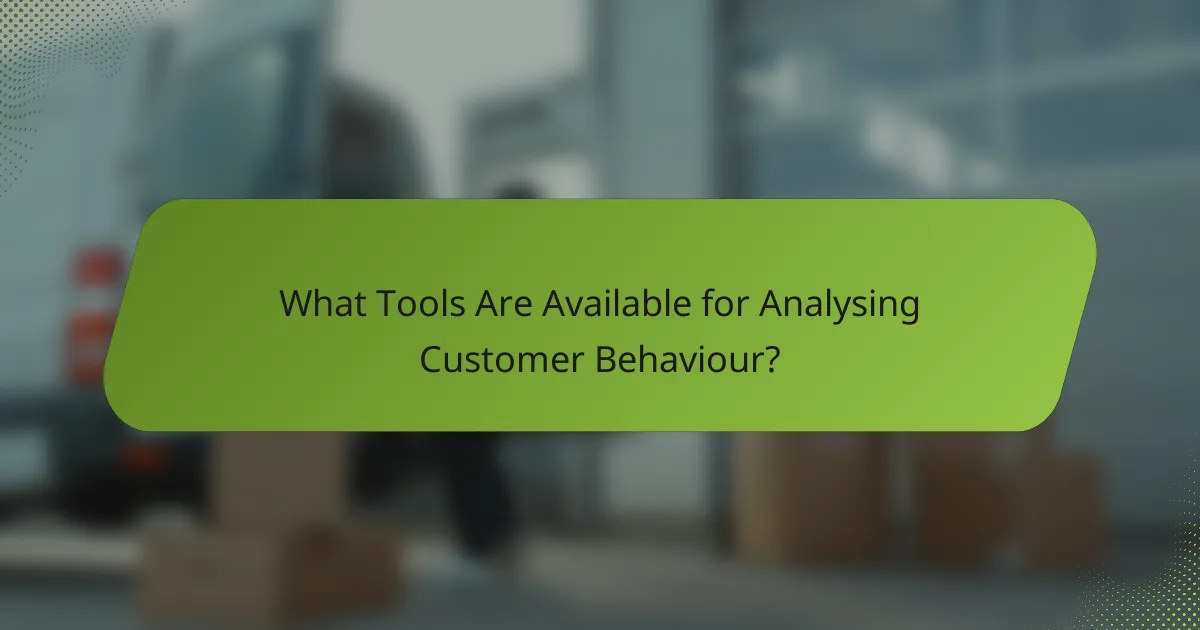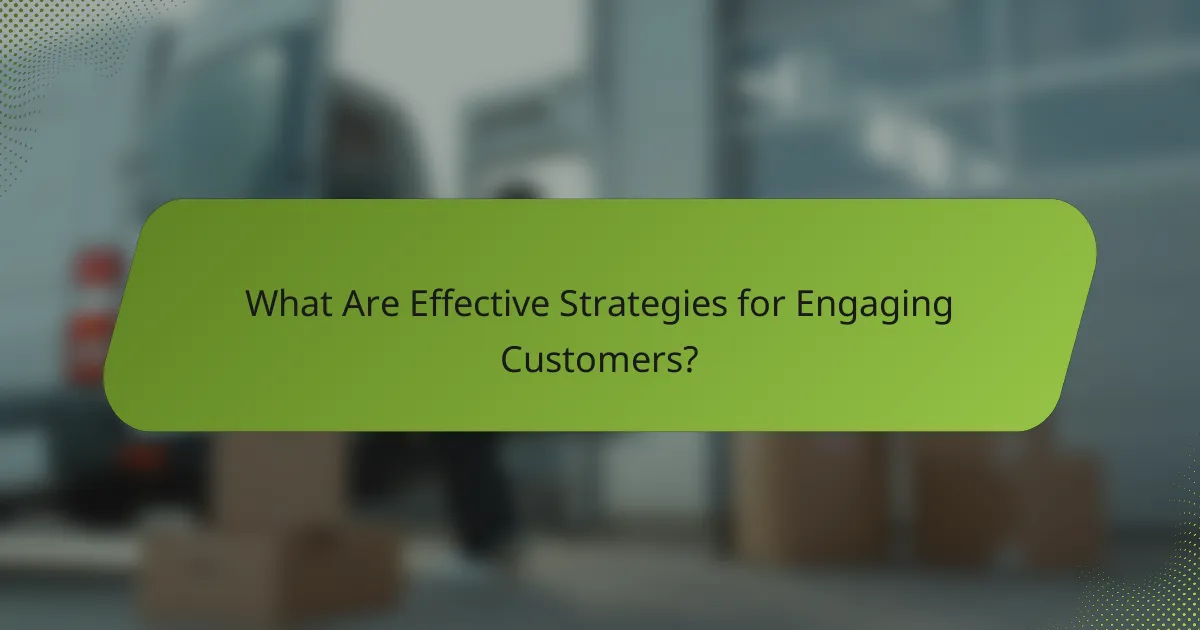Understanding customer behaviour is crucial for small businesses in Spain to thrive in a competitive market. By utilising strategies such as customer surveys, purchase data analysis, and social media insights, businesses can gain valuable insights into consumer preferences and trends. Notably, there is a growing shift towards online shopping, a preference for local brands, and an emphasis on sustainability, all of which are essential for small businesses to adapt to and leverage for success.

How Can Small Businesses in Spain Understand Customer Behaviour?
Small businesses in Spain can understand customer behaviour by employing various strategies that provide insights into preferences and purchasing patterns. Key methods include conducting customer surveys, analysing purchase data, and leveraging social media insights.
Utilising customer surveys
Customer surveys are a direct way to gather feedback and understand consumer preferences. Small businesses can create simple online surveys using tools like Google Forms or SurveyMonkey to ask about product satisfaction, service quality, and desired improvements.
To maximise response rates, keep surveys concise and incentivise participation with discounts or small rewards. Aim for a response rate of at least 10-20% to ensure the data is representative of your customer base.
Analysing purchase data
Analysing purchase data helps businesses identify trends and patterns in customer behaviour. By tracking sales over time, small businesses can determine which products are popular, peak buying times, and customer demographics.
Utilise point-of-sale systems or accounting software to collect and analyse this data. Look for trends such as seasonal spikes or shifts in purchasing habits, which can inform inventory decisions and marketing strategies.
Leveraging social media insights
Social media platforms provide valuable insights into customer behaviour and preferences. By monitoring engagement metrics such as likes, shares, and comments, small businesses can gauge customer interests and tailor their offerings accordingly.
Utilise tools like Facebook Insights or Instagram Analytics to track audience demographics and engagement trends. Regularly review this data to adjust marketing strategies and enhance customer interaction, ensuring that content resonates with your target audience.

What Tools Are Available for Analysing Customer Behaviour?
Several tools can help small businesses in Spain analyse customer behaviour effectively. These tools provide insights into user interactions, preferences, and feedback, enabling businesses to make informed decisions.
Google Analytics for e-commerce
Google Analytics is a powerful tool for e-commerce businesses, offering detailed insights into customer behaviour on websites. It tracks metrics such as page views, conversion rates, and user demographics, allowing businesses to understand how customers navigate their online stores.
To maximise its effectiveness, set up goals to track specific actions, like purchases or newsletter sign-ups. Regularly review the data to identify trends and adjust marketing strategies accordingly, ensuring you cater to the preferences of your Spanish audience.
Hotjar for user behaviour tracking
Hotjar provides visual insights into user behaviour through heatmaps and session recordings. This tool helps businesses see where users click, scroll, and spend time on their site, revealing areas for improvement.
Consider using Hotjar’s feedback polls to gather direct input from users about their experiences. This qualitative data, combined with quantitative metrics, can guide design changes and enhance user satisfaction, particularly for the Spanish market.
SurveyMonkey for customer feedback
SurveyMonkey is an effective platform for collecting customer feedback through surveys. It allows businesses to create customised questionnaires that can gauge customer satisfaction, preferences, and suggestions.
To ensure high response rates, keep surveys concise and relevant. Offering incentives, such as discounts on future purchases, can encourage participation, helping you gather valuable insights from your Spanish customer base.

What Are the Key Customer Trends in Spain?
Key customer trends in Spain indicate a significant shift towards online shopping, a strong preference for local brands, and an increasing focus on sustainability. These trends reflect changing consumer values and behaviours that small businesses should consider to remain competitive.
Increased online shopping
The rise of online shopping in Spain has accelerated, especially post-pandemic. Consumers are increasingly turning to e-commerce platforms for convenience, variety, and competitive pricing.
Small businesses should optimise their online presence by ensuring user-friendly websites and leveraging social media for marketing. Offering flexible payment options and reliable delivery services can also enhance customer satisfaction.
Preference for local brands
Spanish consumers are showing a growing preference for local brands, valuing quality and community support. This trend is driven by a desire to stimulate the local economy and reduce environmental impact.
Small businesses can capitalise on this by emphasising their local roots in marketing efforts and showcasing unique, locally sourced products. Engaging with the community through events or partnerships can further strengthen brand loyalty.
Focus on sustainability
There is an increasing focus on sustainability among Spanish consumers, who are more inclined to support businesses that prioritise eco-friendly practices. This includes preferences for sustainable materials and ethical production methods.
Small businesses should consider adopting sustainable practices, such as reducing waste, using eco-friendly packaging, and sourcing materials responsibly. Communicating these efforts transparently can attract environmentally conscious customers and differentiate the brand in a competitive market.

How Do Cultural Factors Influence Customer Behaviour in Spain?
Cultural factors significantly shape customer behaviour in Spain, affecting preferences, purchasing decisions, and brand loyalty. Understanding these influences can help small businesses tailor their marketing strategies to resonate with local consumers.
Importance of family in purchasing decisions
In Spain, family plays a crucial role in influencing purchasing decisions. Many consumers consult family members before making significant purchases, especially for items like electronics, cars, and home goods. This reliance on family can lead to a preference for brands that are perceived as family-friendly or that promote values of togetherness.
Small businesses should consider emphasising family-oriented messaging in their marketing campaigns. For example, promotions that highlight family benefits or group discounts can attract customers who prioritise family input in their buying choices.
Regional variations in consumer preferences
Consumer preferences in Spain can vary widely by region, influenced by local customs, traditions, and economic conditions. For instance, shoppers in Catalonia may prioritise quality and sustainability, while those in Andalusia might focus on price and value. Understanding these regional differences is essential for effective marketing.
Small businesses should conduct market research to identify the specific preferences of their target regions. Tailoring product offerings and marketing strategies to align with local tastes can enhance customer engagement and drive sales. For example, offering local delicacies or regional specialties can resonate well with consumers in specific areas.

What Metrics Should Small Businesses Track?
Small businesses in Spain should focus on key metrics that provide insights into customer behaviour and overall business performance. Tracking customer acquisition cost, customer lifetime value, and net promoter score can help businesses make informed decisions and optimise their strategies.
Customer acquisition cost
Customer acquisition cost (CAC) measures the total expense incurred to acquire a new customer. This includes marketing expenses, sales team costs, and any promotional offers. For small businesses in Spain, keeping CAC low is crucial to maintaining profitability.
To calculate CAC, divide total acquisition costs by the number of new customers gained in a specific period. A reasonable target for CAC might be around 20-30% of the customer’s first purchase value. Regularly reviewing CAC helps identify effective marketing channels and optimise spending.
Customer lifetime value
Customer lifetime value (CLV) estimates the total revenue a business can expect from a single customer throughout their relationship. Understanding CLV allows small businesses to determine how much they can afford to spend on acquiring customers while remaining profitable.
To calculate CLV, multiply the average purchase value by the average purchase frequency and the average customer lifespan. For many small businesses, a CLV that is at least three times higher than CAC is a good benchmark. This metric can guide marketing strategies and customer retention efforts.
Net promoter score
Net promoter score (NPS) gauges customer loyalty by asking how likely customers are to recommend a business to others. This simple survey question can provide valuable insights into customer satisfaction and areas for improvement.
To calculate NPS, subtract the percentage of detractors (those who rate 0-6) from the percentage of promoters (those who rate 9-10). A score above 50 is generally considered excellent. Regularly measuring NPS can help small businesses in Spain identify strengths and weaknesses in their customer experience, leading to better retention and growth.

What Are Effective Strategies for Engaging Customers?
Effective strategies for engaging customers involve understanding their preferences and creating personalised experiences. Small businesses in Spain can leverage local culture and technology to foster meaningful connections with their clientele.
Utilising Social Media Platforms
Social media is a powerful tool for engaging customers, allowing businesses to interact directly with their audience. Platforms like Instagram and Facebook are particularly popular in Spain, making them ideal for sharing promotions, updates, and customer stories.
To maximise engagement, businesses should post regularly, respond to comments promptly, and use local language and cultural references. This approach helps build a community around the brand and encourages customer loyalty.
Personalising Customer Experiences
Personalisation enhances customer engagement by making interactions more relevant. Small businesses can collect data on customer preferences through surveys or purchase history, allowing them to tailor marketing messages and product recommendations.
For example, sending personalised emails with special offers based on past purchases can significantly increase conversion rates. Additionally, addressing customers by name in communications adds a personal touch that fosters connection.
Implementing Loyalty Programmes
Loyalty programmes incentivise repeat business and enhance customer engagement. Small businesses in Spain can create simple programmes that reward customers for their purchases, such as offering discounts or exclusive access to new products.
Consider a points system where customers earn points for every euro spent, which can be redeemed for discounts or freebies. This not only encourages repeat visits but also makes customers feel valued and appreciated.
Gathering Customer Feedback
Regularly gathering customer feedback is crucial for understanding their needs and improving engagement strategies. Small businesses can use online surveys or feedback forms to collect insights on customer satisfaction and preferences.
Acting on feedback demonstrates that the business values customer opinions, which can strengthen loyalty. For instance, if customers express a desire for more product variety, businesses can adjust their offerings accordingly.
